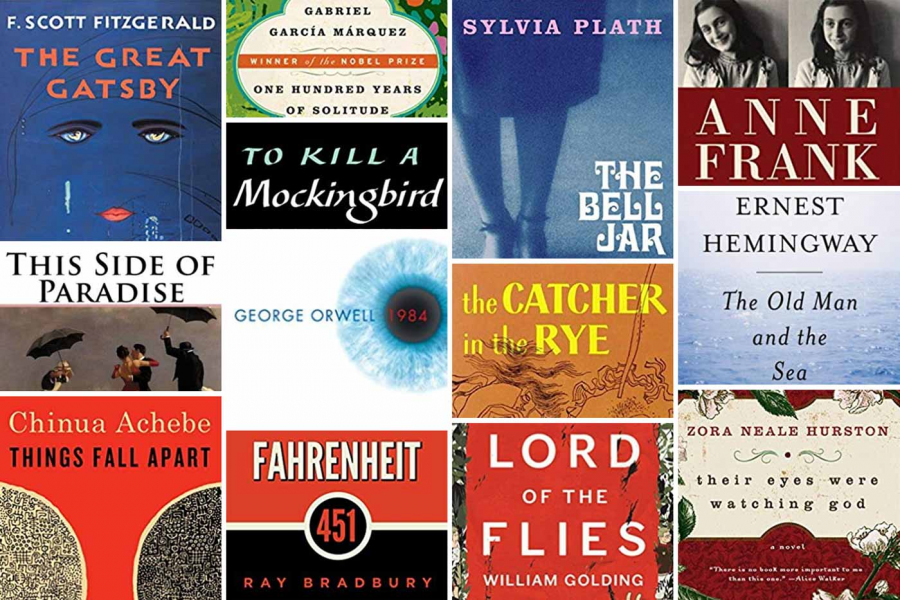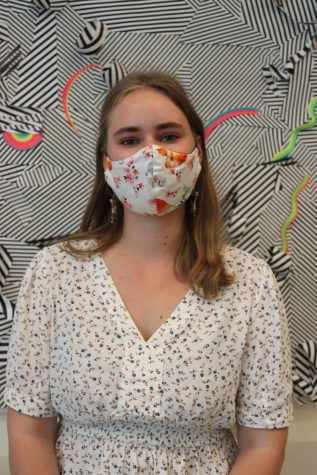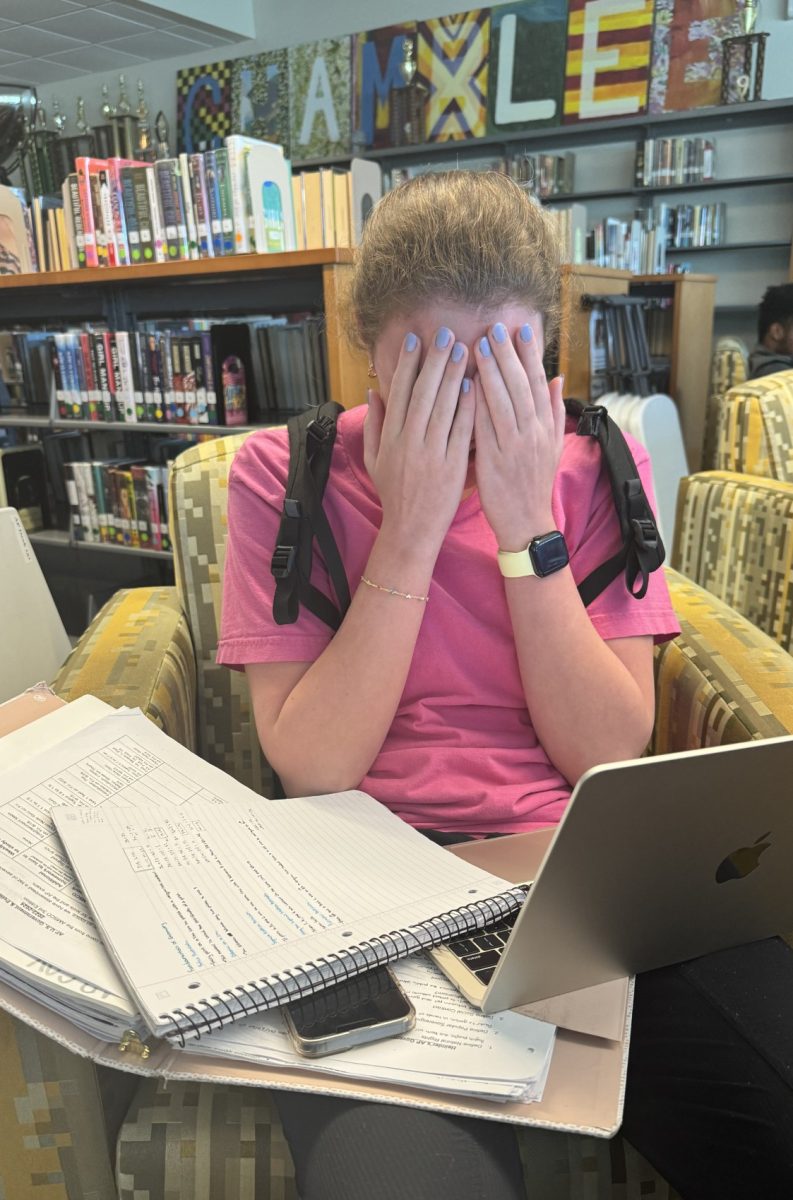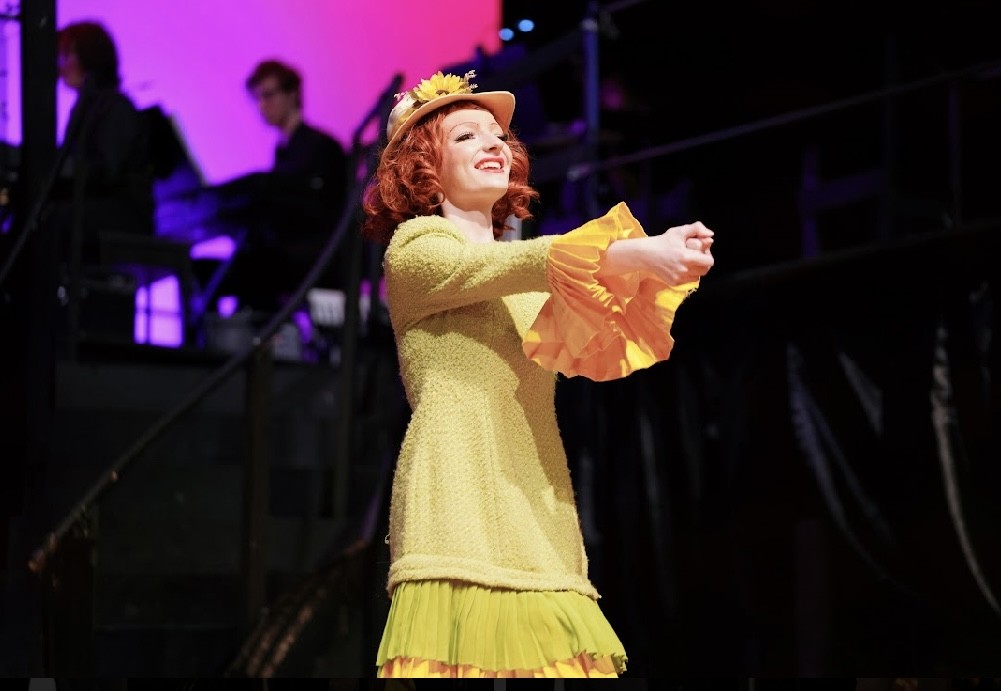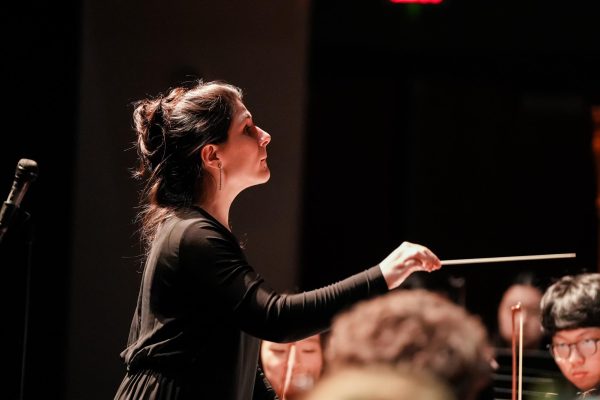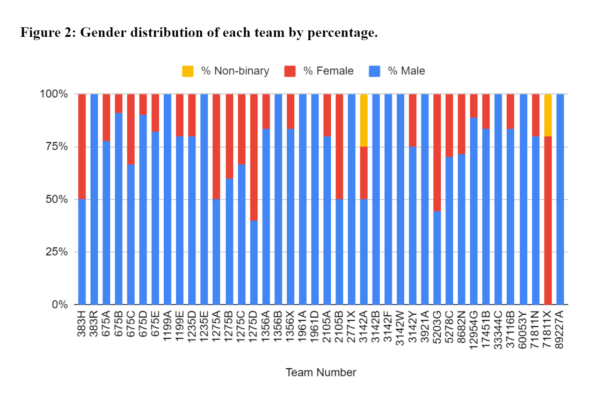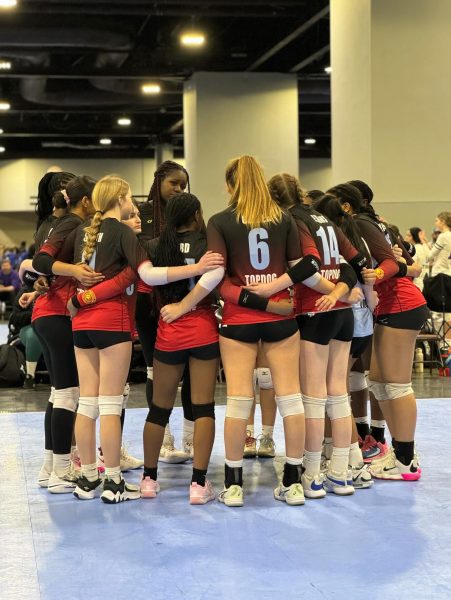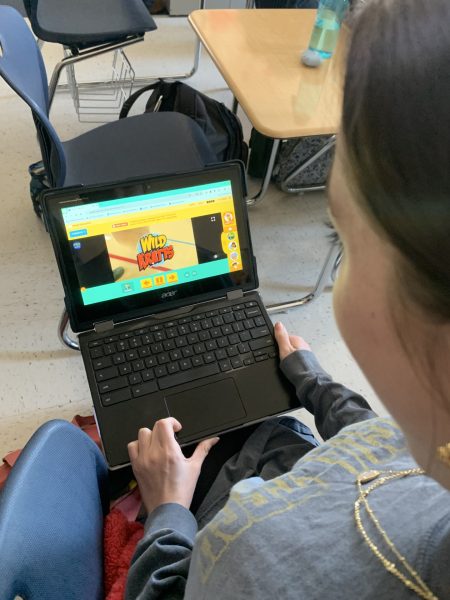Fighting Ignorance: Diversity and Inclusion in Chamblee’s Literature
February 23, 2021
As we look to the future of high school and leave digital school behind, many may wonder if it is the time to bring forth change in education. After a year of untold civil unrest and a push for a new civil rights movement, those in the realm of education have been examining aspects of the curriculum, including every high school student’s required reading. Nationwide pressure from students and teachers toward a more diverse and inclusive curriculum erupted long before 2020. When students cannot see a representation of themselves in what they read, they may not be able to connect with their schoolwork and may remain ignorant about other races, ethnicities, and cultures.
“We read old dead people. We read about situations and although they [have a] reason why they’re still in the canon […], the connections are really getting further and further away from people. […] What I know for sure is that we have to introduce some more contemporary work in order for them to connect to it. Not that the older work needs to go away, it needs to be taught through a different lens,” said Kimberley Nesbitt, one of Chamblee’s English teachers who has taught both freshmen in ninth grade literature and seniors in AP Literature. “We have definite huge, huge gaps because representation matters. People need to see themselves reflected in what they read. People need to understand and be able to connect with the ideas that they see in their literature.”
Issues with Chamblee’s English Curriculum
The problems that many students have with Chamblee’s current curriculum surround who writes the books they read in the classroom and how they represent people of other races and ethnicities. Students have long hoped to see an advancement toward both characters and writers of color.
“When I think about books we’ve read [they include] white main characters and white authors. [There are only] white characters with maybe like very few people of color in the stories, and I think it’s really important that we try to make an advancement towards that,” said Gabi Barrios (‘23).
Not only do students want more representation for people of color, but many also look for prominent literature from around the world to expose themselves to a global worldview.
“We can’t just act like the world is made up of just America and Western European countries and anything that they’ve created literature-wise is the only thing we have to pay attention to,” said Ayushi Mukund (‘21), currently in AP Literature under Nesbitt. “I’m not sure if it stemmed from the summer movement, but we did have a similar discussion about this during one of our class discussions in AP Lit this year. It touched on how we only know one type of literature and completely ignore the fact that there is so much more out there that we haven’t been exposed to.”
The problem that can arise from this lack of representation, according to Barrios, is that students may be unable to diversify the media they consume if they are not provided with a childhood foundation of representation.
“I myself am very mixed and I don’t really see a lot of representation of myself or other people in stories and books and it kind of creates a premise for everything I might read in the future, colleges or as an adult. So that’s something that’s kind of lasted throughout childhood into now,” said Barrios.
Teachers like Nesbitt believe that the department needs to change but hope to be a part of that change as their careers move forward. They still truly believe in their English department.
“I’m hoping to be part of the change that I like to see. I think that we (though, of course, every department will say this) have the best department in Chamblee, but I see a lot of room for improvement. I see a lot of talk and not a lot of change. I’m hoping to be instrumental in implementing some of that change going forward,” said Nesbitt.
More Severe Consequences
The repercussions of not being taught other viewpoints and experiences go far beyond what books are chosen for reading. Ignorance can spawn many uglier faces than a lack of representation, such as the use of slurs by students and teachers alike.
“I will never forget in 8th grade when I had a white English teacher who did not hesitate to use the n-word out loud while we were reading To Kill A Mockingbird,” said Mukund.
Experiences like Mukund’s are not rare for most students, who see not only microaggressions but the use of derogatory language towards people of color in classroom settings.
Students are pushing for more contemporary and inclusive reading as they continue to read more outdated works littered with stereotypes.
“A lot of the books we’ve read have had a certain stereotype around certain races and that’s portrayed in a lot of books and [teachers are] always like ‘Oh obviously, this is not the time now,’ and I [agree], but we have to make progression towards ‘not the time now,’” said Barrios.
Student Input and Choice
As teachers and students discuss ways to improve inclusion and diversity in their required reading, many have chosen to give students the ability to diversify their own reading, by leaving the choice of books up to the students. Nesbitt assigns independent reading chosen by students.
“[I’m] more attracted to reading books with characters that are like me,” said Mukund. “Ms. Nesbitt has given us an optional list of books that expose us to different readings, ones that aren’t usually in the curriculum, and readings that have different cultural backgrounds.”
In addition, new Chamblee classes like Multicultural Literature also represent the push to teach a curriculum all students will learn from and enjoy, by allowing new types of writers and genres to enter the Chamblee curriculum, specifically through the use of surveys.
“I do think that students should have a voice in helping to develop curriculum. In Multicultural Lit, for example, it’s our first year, and I love this class. I’ve […] created some forms and surveys for types of literature, be that by genre or by representation, and I love having that,” said Adrienne Keathley, who taught Multicultural Literature this year.
Keathley hopes to see even more student input beyond the classroom, perhaps starting a schoolwide initiative, such as a student committee or group.
“I hope that there is more student involvement. I personally do. I would love to be involved in any kind of student committee that has a variety of backgrounds. Gender identity, sexual orientation, all of the isms come to a table and can express either something that they’ve read that they loved and or [something that they] haven’t [particularly enjoyed],” said Keathley. “How are we going to create lifelong readers and learners if we don’t engage them in the process personally?”
Student choice inside the English classroom gives students the ability to choose narratives that teachers won’t necessarily push on their own. Many students, however, wonder if there is a direct correlation between representation and choice.
“I don’t necessarily think teachers really push books with diversity and range, but I feel like if students had the choice, books like ‘The Hate You Give’ or other ones that might be in the library [would be chosen] but I can’t say I’ve seen a direct difference,” said Barrios.
Student choice could be hindered by the desire to get a good grade, follow the standard, or please the teacher, but it can possibly still allow students to find characters that they can connect with.
“Honestly, I don’t think that most students would search for new voices and new readings, because they want to make sure that they can choose books that have already made a good reputation, so that they can get an acceptable grade. But, I do think students would be interested in reading things by writers that look like themselves and [with] characters that look like themselves,” said Mukund.
Teacher Involvement
Students are not the only ones involved in their curriculum. Teachers can utilize student choice to allow their students to see diversity; however, many know that teachers are needed to diversify their teaching. This discussion started long before this school year.
“The view was changing even before 2020 within the English Department. We, as a department, have talked about diversifying the curriculum for years,” said Jennifer Andriano, one of Chamblee’s English teachers known for instructing World Literature, Writer’s Workshop, and more.
Indeed, many students believe that a change in representation lies mainly in the teacher’s hands.
“I would want [teachers] to [realize that] we don’t have to read every single classic poem or book by an old white man who has racial stereotypes in his book,” said Barrios.
Some teachers at Chamblee have individually chosen reading assignments for their students every year but also use the classic concept of required reading to break the bubble of literature many students often find themselves in.
“I do think the teacher still needs to introduce genres and different types of writers. Otherwise, people exist in a bubble, and that’s a way to kind of craft what you like to read and you never step outside of that. So I think that we do have the responsibility to a level to level that out,” said Nesbitt. “I think there should be a healthy dosage of both [student choice and teacher choice] and I think a good way to do that is to provide summer reading lists and to do the independent reading projects to get students credit for their own choices as well.”
Keathley creates one solution to the lack of teacher-enforced diversity by pushing black fiction to which she believes students need to be exposed more.
“[I love teaching Toni Morrison who wrote] Sula and Beloved. I love all of [her works]. She is one of our ‘Nobel Prize for Literature Award’-winning treasures. She just died last year. She’s my personal favorite and I do not believe that there is enough black fiction taught,” said Keathley. “Every year, I poll my students, and it’s not that they haven’t read any black literature, but it’s typically nonfiction the whole way through. I think that it’s really important prior to going off to college that there is a more broad view of types of fiction and drama that they are exposed to. That speaks true of other nationalities as well. I’m broadening my own depth of repertoire for that. But, certainly, in my career, I’ve made a point for Morrison, Ralph Ellison, James Baldwin, and some of the iconic figures of black literature to be in my curriculum.”
Required Reading
Barrios feels that there is only so much students and teachers can do individually if the core curriculum followed by all teachers remains rooted in the same perspective throughout all of the K-12 progression.
“It’s kind of always been the same. I think this year, we might be starting to branch out. But even so, it’s mainly white authors that I’ve seen throughout all of my childhood. It’s like the curriculum books that you read, but they don’t really assign people of color to have those curriculum books, which is a bit unfortunate in my opinion,” said Barrios.
Many of the books recognized by almost any high school student or alum can no longer feel accurate, yet remain being read year after year, like The Adventures of Huckleberry Finn or To Kill a Mockingbird.
“[In] The Adventures of Huckleberry Finn, Mark Twain, a white man, is trying to use satire on racism at some points and it doesn’t really sit right with me. And the language he uses is really insensitive in my opinion. To Kill a Mockingbird kind of just brushes on the topic of racism and plays into the whole “white savior” storyline that I don’t think is right,” said Mukund.
Keathley believes that there is a lot of value in requiring reading that might not otherwise be required.
“I believe that in order for growth to come there has to be a little bit of discomfort, you know what I mean? And so that unfamiliarity can create a little trepidation sometimes but in my experience, the discussions and conversations have just been transformative for students,” said Keathley. “Especially going right before they go off to college, you know, recognizing one’s privilege or […] whatever it is that they get out of the discussions is one that is really important to the maturation process before you leave the nest and go off on your own. So yes, I do think it’s imperative that we assign it. It’s our job to make sure that everybody’s background and lenses are part of the curriculum that we create.”
Students and teachers at Chamblee alike see a need for change in the works taught in English classes. To represent every student, it is vital that there are works for and by people of color and that teachers are ready to teach inclusive material.
“As a woman of color, as an African-American, let me just say that I know for a fact that […] we need to increase our people of color, what we’re reading, and it needs to be reflective of the diversity that we see in our building. Not just for the people who are people of color but for everybody, this [department should be] culturally responsible on our part to incorporate more titles that my colleagues should be comfortable with teaching first and foremost,” said Nesbitt. “I would be remiss if I said that I thought that we were doing a good job with that, but we’re not. So that’s what I would like to see different in this school and what I’m going to work very hard to try to implement.”

